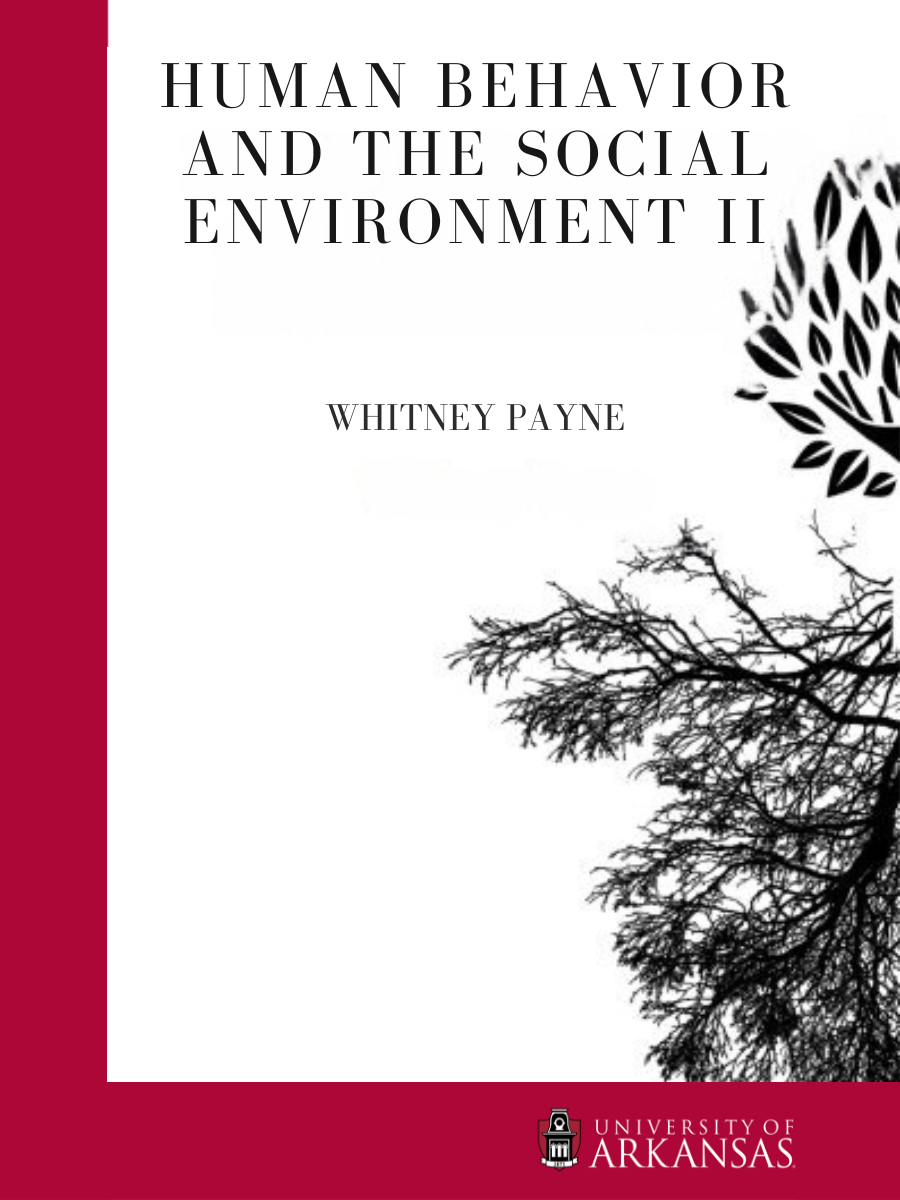Contents
Show All Contents
Hide All Contents
Book Contents Navigation
I. Traditional Paradigms & Dominant Perspectives on Individuals
1.1 Introduction 1.2 The Social Actor 1.3 The Motivated Agent 1.4 The Autobiographical Author 1.5 End-of-Chapter Summary 1.6 Additional Resources 1.7 Discussion Questions 2.1 Introduction 2.2 Link between Culture and Society 2.3 Defining Culture 2.4 Cultural Sociology 2.5 Theoretical Perspectives on Culture 3.1 Social Production of Culture 3.2 Collective Culture 3.3 Cultural Change 4.1 Cultural Hierarchies 4.2 Cultural Hegemony 4.3 Prejudice and Discrimination 5.1 Identity Formation 5.2 Sex and Gender 5.3 Sexuality and Sexual Orientation 5.4 Body and Mind 5.5 Race and Ethnicity 5.6 Religion and Belief Systems 5.7 Identity Today 6.1 Globalization and Identity 6.2 Building Cultural Intelligence II. Alternative Perspectives on Individuals
7.1 Introduction 7.2 Perceiver Characteristics 7.3 Cultural Differences in Person Perception 7.4 Attribution Styles and Mental Health 7.5 End-of-Chapter Summary 8.1 Introduction 8.2 The Measurement & Extent of Poverty 8.3 Who the Poor Are: Social Patterns of Poverty 8.4 Explaining Poverty 8.5 The Consequences of Poverty 8.6 Global Poverty 8.7 Reducing Poverty 8.8 End-of-Chapter Summary 9.1 Introduction to Prejudice, Discrimination, and Stereotyping 9.2 Dimension of Racial and Ethnic Equality 9.3 Feminism and Sexism 9.4 Reducing Gender Inequality 9.5 The Benefits and Costs of Being Male 9.6 Masculinities 10.1 Aging Social Problems in the News 10.2 Age Cohorts 10.3 The Concept & Experience of Aging 10.4 Perspectives on Aging 10.5 Life Expectancy & the Graying of Society 10. 6 Biological & Psychological Aspects of Aging 10.7 Children and Our Future 10.8 Applying Social Research 10.9 Problems Facing Older Americans 10.10 Lessons from Other Societies 10.11 People Making a Difference 10.12 Reducing Ageism & Helping Older Americans 10.13 End-of-Chapter Summary 11.1 What is Sex, Gender, Sexuality, & Sexual Orientation? 11.2 Sexual Orientation and Inequality 11.3 Understanding Sexual Orientation 11.4 Public Attitudes About Sexual Orientation 11.5 Inequality Based on Sexual Orientation 11.6 Improving the Lives of the LGBT Community 11.7 Sexual Orientation & Inequality Summary 11.8 Pornography III. Perspectives on Families
12.1 Introduction 12.2 What is Family? 12.3 How Families Develop 12.4 Dating, Courtship, and Cohabitation 12.5 Family Issues and Considerations 12.6 Happy Healthy Families 12.7 Additional Resources 13.1 Introduction 13.2 The Importance of Relationships 13.3 The Question of Measurement 13.4 Presence and Quality of Relationships and Well-Being 13.5 Types of Relationships 13.6 Fact or Myth: Are Social Relationships the Secret to Happiness? 13.7 Additional Resources 14.1 Early childhood experience 14.2 Parental investment and programming of stress responses in the offspring 14.3 Child nutrition and the epigenome IV. Perspectives on Groups
15.1 Introduction 15.2 Understanding Social Groups 15.3 Group Process: the Pluses & Minuses of Working Together 15.4 Improving Group Performance 15.5 Thinking Like A Social Psychologist About Social Groups 15.6 End-of-Chapter Summary 16.1 Introduction to the Psychology of Groups 16.2 The Psychological Significance of Groups 16.3 Motivation and Performance 16.4 Making Decisions in Groups 16.5 You and Your Groups 16.6 Outside Resources 16.7 References V. Stages of Group Development & Group Think
17.1 Overview of Groupthink 17.2 Additional Resources VI. Perspectives on Organizations
19.1 What is Industrial and Organizational (I/O) Psychology? 19.2 What Does an I/O Psychologist Do? 19.3 Careers in I/O Psychology 19.4 History of I/O Psychology 19.5 Additional Resources 19.1 Competition and Cooperation in Our Social Worlds 19.2 Conflict, Cooperation, Morality, and Fairness 19.3 How the Social Situation Creates Conflict: The Role of Social Dilemmas 19.4 Strategies for Producing Cooperation 19.5 Thinking Like a Social Psychologist About Cooperation and Competition 19.6 End-of-Chapter Summary 20.1 Introduction 20.2 Group Dynamics 20.3 Organization 20.4 Symbolic Power 20.5 Organizational Culture VII. Perspectives on Communities
21.1 Communities Based Upon Geographical Region 22.1 Introduction 22.2 Sociological Perspectives on Population & the Environment 22.3 Population 23.4 The Environment 22.5 Addressing Population Problems & Improving the Environment 22.6 End-of-Chapter Summary 23.1 Introduction 23.2 A Brief History of Urbanization 23.3 Sociological Perspectives on Urbanization 23.4 Problems of Urban Life 23.5 Problems of Rural Life 23.6 Improving Urban & Rural Life 23.7 End-of-Chapter Summary VIII. Communities & Police Relations
24.1 Introduction 24.2 Police 24.3 Criminal Courts 24.4 The Problem of Prisons 24.5 Focus on the Death Penalty IX. Global Perspectives & Theories
25.1 Introduction 25.2 Immigration Policy 25.3 Current Immigration Policy 25.5 Future Directions 25.6 End-of-Chapter Summary 27.7 Appendices 26.1 Introduction 26.2 Fleeing Persecution and Separation from Family 26.3 Travel to Temporary Refuge 26.4 Family Admittance to the United States 26.5 Entering the United States 26.6 Future Directions in Policy and Refugee Family Support 26.7 Conclusion 26.8 Appendix 27.1 Introduction 27.2 What are Human Rights? 27.3 The Universal Declaration of Human Rights 27.4 The Status of Human Rights in the United States 27.5 Emerging Directions 27.6 End-of-Chapter Summary 28.1 Introduction 28.2 Employment 28.3 Access to Necessities 28.4 Financial Problems 28.5 Future Directions 28.6 End-of-Chapter Summary 29.1 Introduction 29.2 Different Shared Experiences 29.3 Mental Health Challenges 29.4 Mental Health Treatments 29.5 Emerging Directions 29.6 End-of-Chapter Summary 32.1 Introduction 32.2 Defining IPV 32.3 IPV Among Immigrants & Refugees 32.4 Risk & Protective Factors 32.5 Responses to IPV 32.6 Barriers to Help Seeking 32.7 Future Decisions 32.8 Case Study 32.9 End-of-Chapter Summary 33.1 Introduction 33.2 Substance Abuse Prevalence 33.3 Risk Factors 33.4 Family Influences on Substance Abuse 33.5 Theoretical Frameworks 33.6 Policy on Legal Consequences on Substance Abuse 33.7 Substance Abuse Prevention & Intervention 33.8 End-of-Chapter Summary 34.1 Introduction 34.2 Family Motivation: Value of Work & Education 34.3 Family Connectedness & Identity 34.4 Role of Resources in Achieving Aspirations 34.5 Emerging Directions 34.6 End-of-Chapter Summary 35.1 Introduction 35.2 Assimilation 35.3 Family Theories: A New Direction for Research with Resettled Populations 35.4 Critical Theories 35.5 Cultural Values to Consider in Resettlement Research 35.6 Future Directions 35.7 End-of-Chapter


